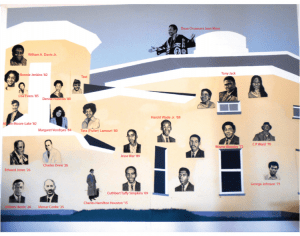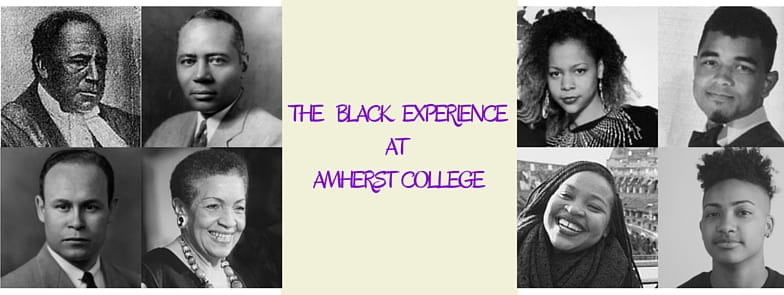I started by looking into the Octagon before it became the Black Cultural Center. The Octagon was built in 1847-1848 and was designed by Henry A. Sykes who was an architect and contractor. Former Amherst College President Edward Hitchcock was largely responsible for the construction of the Octagon. Hitchcock describes the Octagon (Woods Cabinet): “It was not until the erection of the Woods Cabinet [the Octagon] in 1 848, that an exhibition of good taste in the buildings where young men are educated, was thought promotive of the main object instead of needless waste.” The list of donors can be found on a plaque in the Octagon and a total of $8,437 dollars was raised to build the Octagon. The Octagon housed the College’s scientific collection and the Lawrence Observatory. The original building included only the octagonal tower and the two-story cabinet. The one-story octagonal room (the room with the television) and the wooden wing at the east (restroom space) were later additions. For this information I referenced The Story of the Campus and Buildings of Amherst College by Stanley King.
I also focused on the mural located in the Gerald Penny Center of the Octagon. This week the original artist returned to campus, so I used the Alumni List Serv and the help of Kevin Soltau ’01 to identify each person depicted. I have attached the image below, which has the mural labeled. There are still a few faces that I need to investigate. I was also able to find some information about their time at Amherst. For example, I learned that the first black woman to be a resident counselor was Tara (Fuller) Lamourt ’80, who is depicted on the mural. Also her twin sister was the co-creator of the Sabrina’s A cappella Group.
I also learned that the Octagon was a venue for several weddings of Amherst College students. For example Uthman Muhammad ‘70 and his wife were married in the space. So this upcoming week I hope to really look into publications about the Octagon and how the repurposing of the space was portrayed to the Amherst community. I also hope to continue looking for flyers, event posters, to get a sense of how the space was used.

